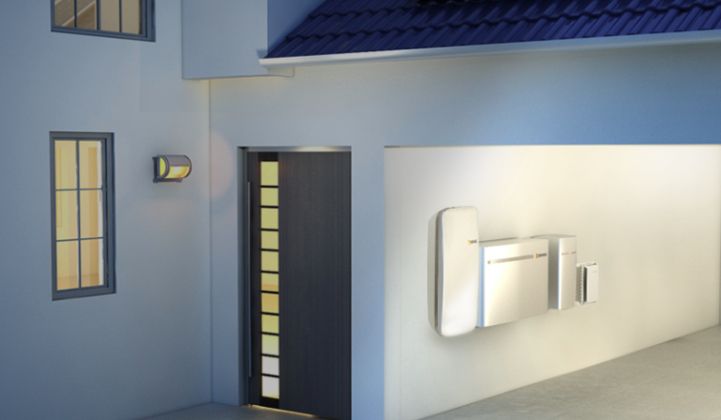Enphase’s current growth is based around its core solar microinverter business. But in discussing the company's Q3 earnings Tuesday, CEO Badri Kothandaraman focused on how Enphase's soon-to-launch integrated energy storage system could aid Californians facing the state’s unfolding wildfire and grid blackout emergency.
California-based Enphase is far from the only residential solar equipment provider adding batteries to the rooftop PV proposition. Sunrun, the U.S. rooftop solar leader, says that a quarter of its California solar customers are now choosing to add batteries to their systems.
While Kothandaraman declined to predict how many battery-backed Ensemble systems the company will sell, he expects similar “attach rates” to those seen by Sunrun in the California market.
The demand for solar-battery backup systems could skyrocket, Kothandaraman said, with millions of Californians undergoing days-long blackouts this month under the expanded fire-prevention power outage regime of bankrupt utility Pacific Gas & Electric.
“The blackouts in California will only increase the attach rates for storage," he said.
Many Enphase employees live in the same PG&E territory now facing evacuations from the Kincade Fire or lengthy power outages meant to prevent more fires from starting.
"Storage has a massive potential for [Enphase]," Kothandaraman said. "It takes us from $2,000 a home to $10,000 a home” in terms of revenue per installation, he said.
“Ensemble is a technology that brings together solar, storage, inverters and even a generator on a single technology platform to keep a home's [power] always on."
Solar-storage systems aren’t capable of keeping most homes fully powered for more than an hour or two, leaving it up to homeowners to decide on critical loads and manage battery life to match the duration of their outage. But the Ensemble system is preconfigured to manage these complex balancing tasks, Kothandaraman said — something not all systems built from disparate parts can claim.
Kothandaraman noted that Enphase’s new IQ 8 microinverter technology, set for commercial launch in mid-2020, will be able to power a home even without attached batteries, by providing alternating current (AC) power directly from the modules to household wiring. That’s not possible with traditional rooftop solar systems, which convert direct current (DC) power from panels to AC power at a central inverter — unless that inverter is specially equipped to disconnect itself from the grid.
While the backup power of a standalone rooftop solar PV system may be marginal, for those homeowners who want it, the IQ 8 system may be a far more elegant solution, he said.
Investment Tax Credit safe-harbor orders rolling in
Enphase reported its fourth straight profitable quarter on Tuesday, part of an ongoing recovery that’s seen its latest IQ 7 microinverter technology retake U.S. market share from competitor SolarEdge.
Enphase took in net income of $31.1 million on revenue of $180.1 million in Q3, up 34 percent from its net income the prior quarter and 131 percent from its money-losing second quarter of 2018.
Shares of the company traded down 12 percent after hours on Tuesday, at around $22.
The company shipped nearly 1.8 million microinverters in the third quarter, compared to 1.3 million in the previous quarter, and it expects to ship between 2.1 million and 2.2 million in the fourth quarter, Kothandaraman said.
After several quarters of shortages of key electronics components, the company has now built up enough inventory, along with ramped-up production from its Flex factory in Mexico, to end its capacity constraints, he said.
That puts Enphase in a strong position to meet demand for its Ensemble system. The long-promised combination of battery, inverter, related switchgear and controls, and cloud-based software is now being tested in select homes, Kothandaraman said.
Enphase has battery supply deals with A123 Systems and another unnamed Chinese manufacturer for its 3.3-kilowatt-hour and 10-kilowatt-hour systems. And it has lined up 24 installer partners ready to start taking preorders in December, with production shipments set to start in the first quarter of 2020, Kothandaraman said.
Enphase's fourth-quarter revenue guidance of $200 million to $210 million includes $35 million of ITC safe-harbor shipments, a fourfold increase over Q3 as the U.S. solar market prepares for the phase-down of the federal tax incentive.
The company expects an “equally significant amount” of safe-harbor revenue in Q1 2020, Kothandaraman said.



